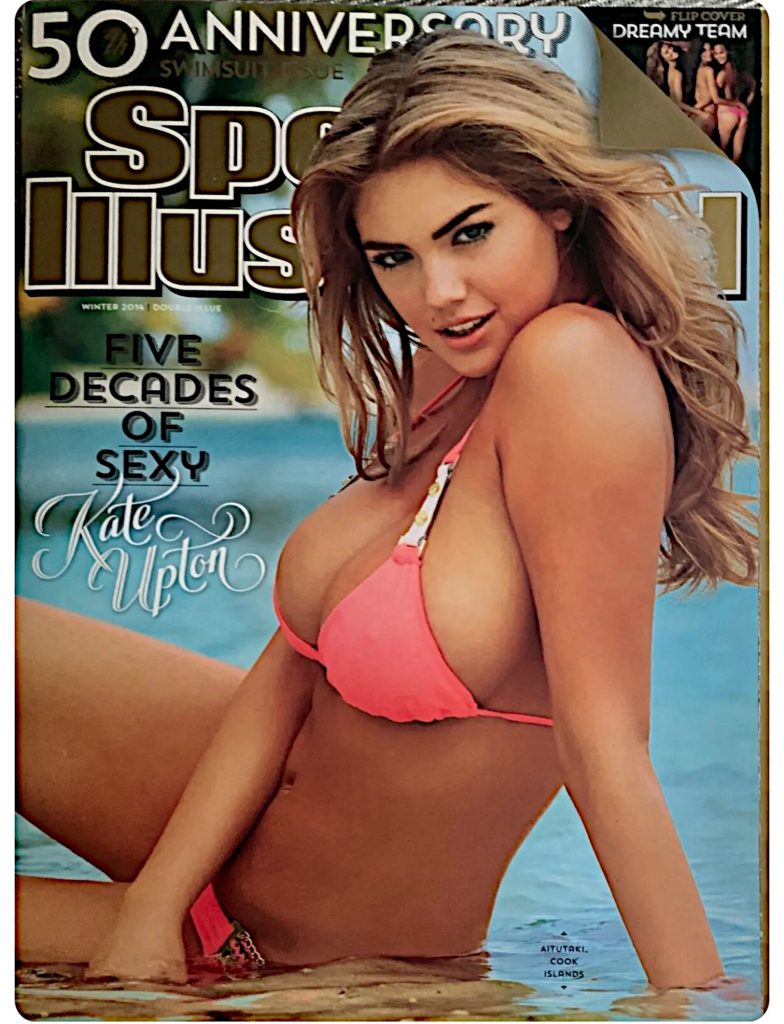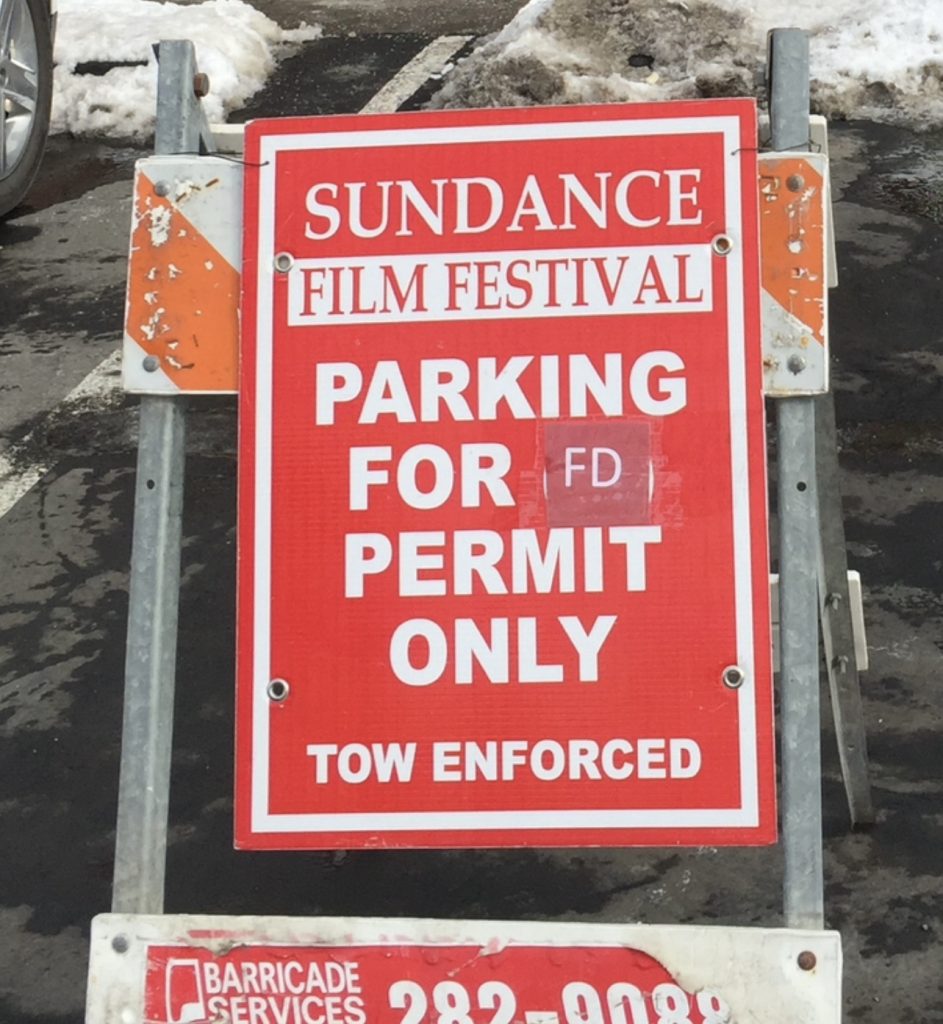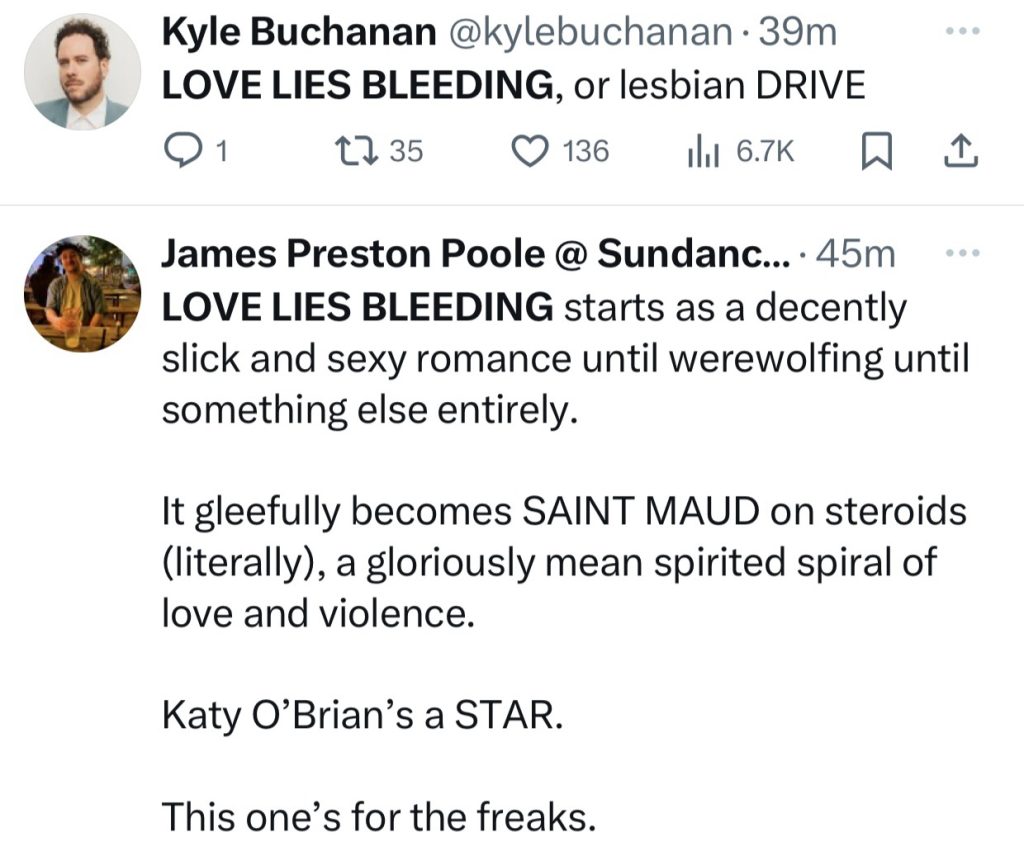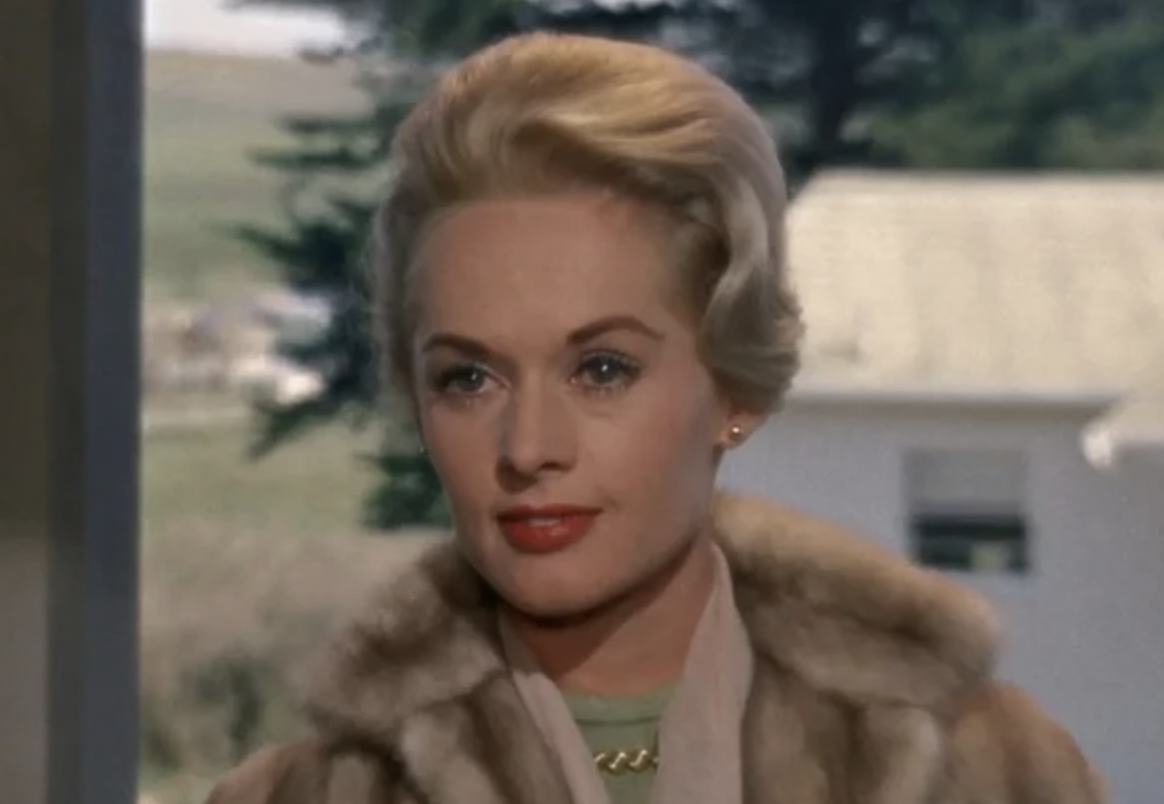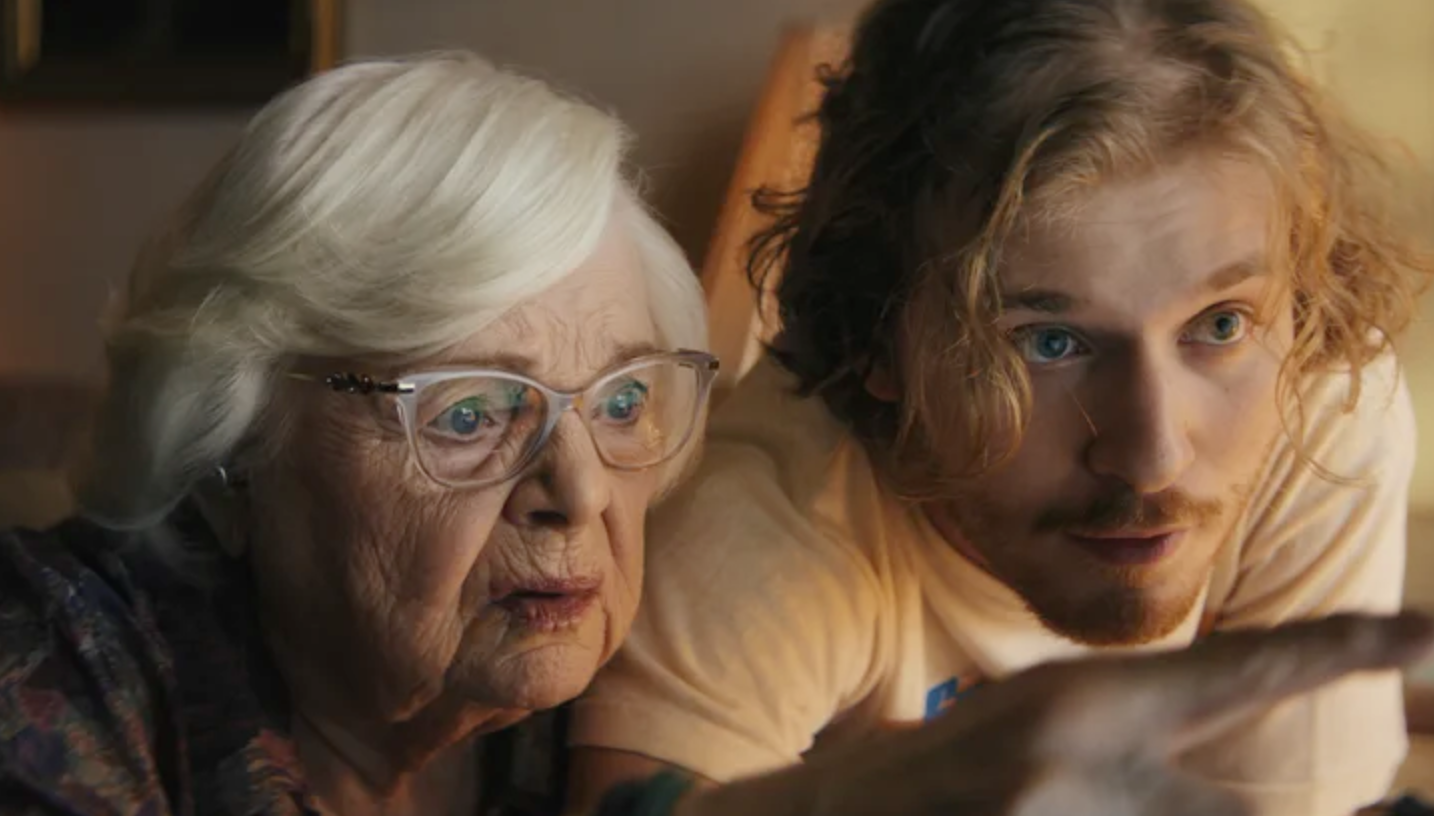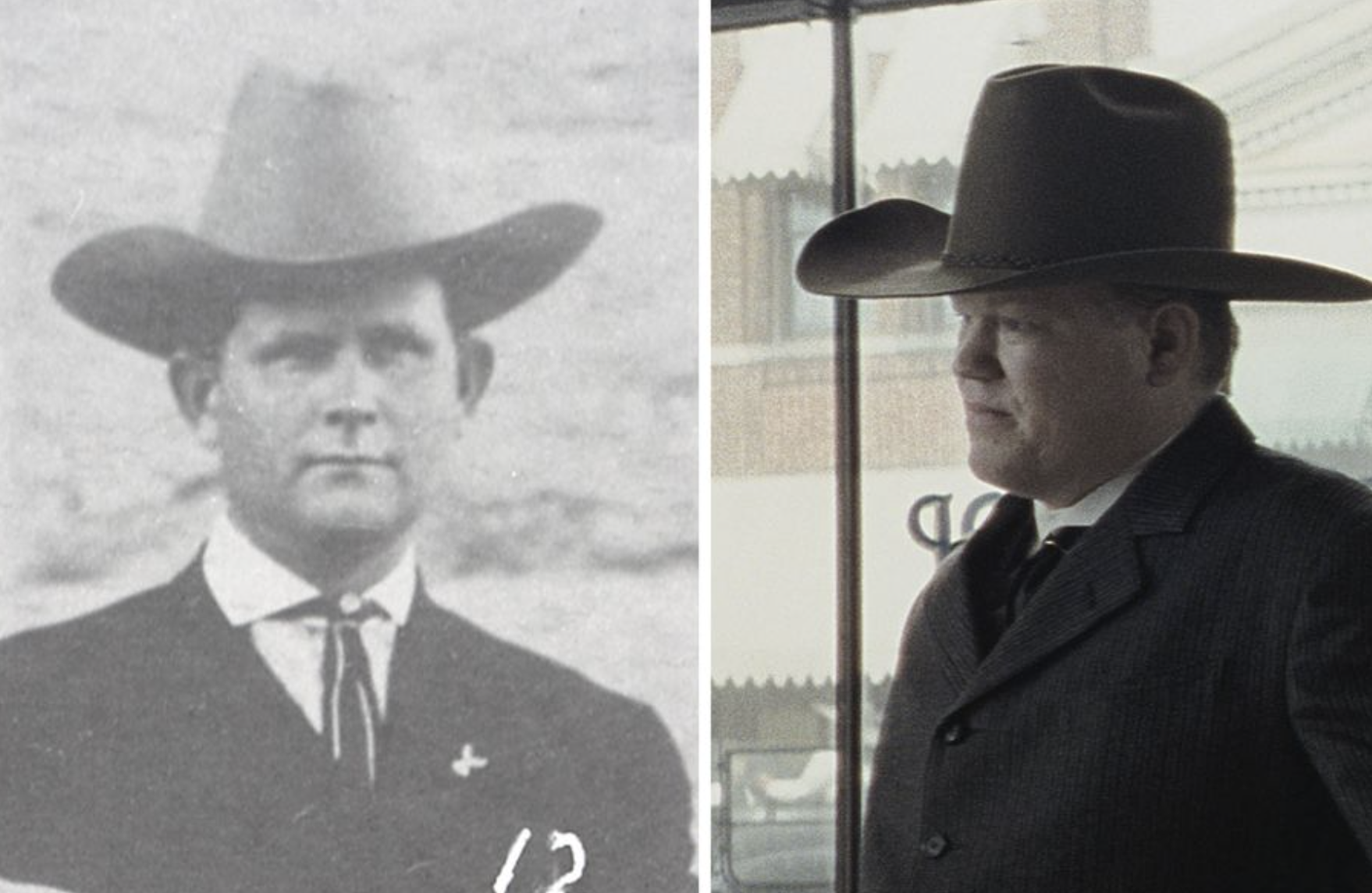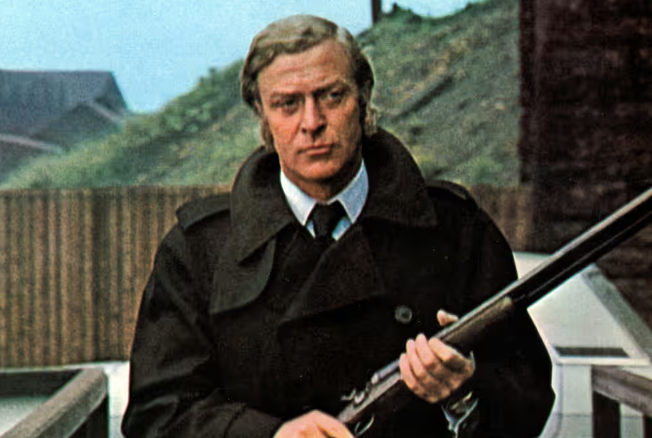“The greatest show on earth” since when? Rosanne Barr strikes me as repulsive.
Daily
Hedren’s 94th
Two days ago (1.19) a Facebook tribute congratulated Tippi Hedren for having reached her 94th year (blow out the candles!) as well as her acting in Alfred Hitchcock’s The Birds (‘63) and Marnie (‘64), among other efforts and creations.
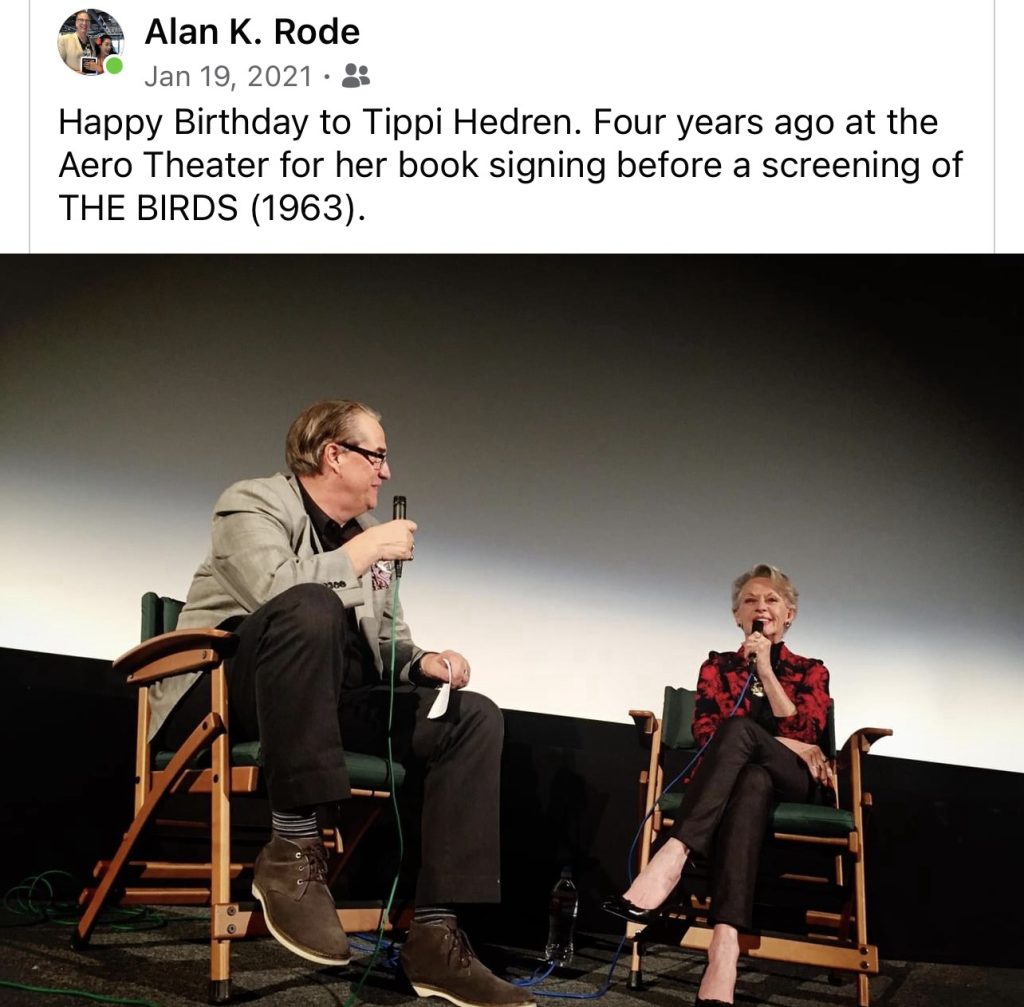

HE to Hyland: She hasn’t out-lived this critic.
Hedren’s characters in The Birds and Marnie have always struck me as curiously prim, overly tidy mannequins. She fit that immaculate, early ‘60s department store window persona — not just conservative, but a bit chilly and brittle.
I’m sorry but you don’t believe for a second that either character has ever been possessed by a single erotic impulse.
Hitchcock was once quoted saying that Hedren “didn’t bring the volcano.” He wasn’t wrong.
Grace Kelly had a similar porcelain quality, but one always sensed an undercurrent of suppressed hunger and passion from her performances.
There’s nothing wrong with inhabiting or conveying a curiously chilly and brittle persona, but if that’s your main game there’s not a lot of range involved.
Try to imagine Hedren as Blanche DuBois — you can’t.
She radiates a certain cool officiousness, a real-estate agent vibe. As such Hedren has reminded me of many women of wealth and assurance that I’ve run into or have known in upscale circles. There’s nothing false or ungenuine about this.
Is the private, off-screen Hedren a woman of kindness, elegance, poise, compassion, etc.? Allegedly so and good for her. She’s lived a good, long, healthy life, and she loves her big cats.
But remember Mitch Brenner mentioning that salacious news item about Melanie Daniels having allegedly taken a nude dip in a pool surrounding a large Roman fountain? The instant he brings this up you say to yourself “no way…Melanie Daniels isn’t the type to disrobe in public, drunk or sober, and she never will be.”
And that’s fine. No disapproval — just a statement of fact. I wrote this as a retort to Tom Hyland.
“Thelma” Isn’t Half Bad
Josh Margolin‘s Thelma, a Sundance headliner that I saw last night, is a mostly mild situation dramedy about the pitfalls, sadnesses and surprising turn-arounds of a chubby old biddy (the 94 year-old June Squibb, in her first starring role) when the going gets tough.
It makes for a reasonably decent sit, although I didn’t like it at first because of the hugely annoying Fred Hechinger (The White Lotus), who plays Squibb’s flaky-loser grandson.
Squibbs’ titular character is also 90something and, as you might presume, suffering from the usual intellectual and physical diminishments. Sissies need not apply.
Thelma is about the white-haired Squibb getting scammed out of $10K (which actually happened to Margolin’s real-life grandmother), and how she refuses to take this humiliation lying down and soon after becomes a dogged investigator and push-backer on her own steam and tenacity.
The reason I didn’t like Hechinger, whose dipshit Zoomer character has been told by his mom and dad (Parker Posey and Clark Gregg) to look after Squibb and keep her out of trouble, is because his performance had me half-convinced that he was in on the scam. (I hate guys like Hechinger…I really do.)
After going to the cops and getting no help, Squibb locates the post office box address that she sent the $10K to by envelope. (A voice on the phone told her to do so or Hechinger would be in deep shit, and she bought it.)
She makes her way to a nearby assisted living facility to seek the assistance of old buddy Ben (Richard Roundtree), which boils down to Thelma borrowing his mobility scooter, except Ben won’t let her drive alone.
They visit the home of an old out-to-lunch friend, and during this stopover Thelma discovers and pockets a loaded pistol. (Not worth explaining.) They get back on the scooter and wind up at a gas station, but then Thelma forgets to engage the parking brake…
With Posey, Gregg and Hechinger in hot pursuit…Jesus, I can’t do this. What am I gonna do, spill the whole story?
Eventually Thelma and Ben get to the bottom of things, and I was quite amused to discover that the principal scammer is none other than the white-haired 70something Alexander DeLarge.
The situation is resolved a little too easily but by that time I had decided that Thelma is an above-average thing, not quite on the level of Little Miss Sunshine but occasionally so.
Thelma is not a comedy — it’s a half-and-halfer. It certainly declines to go goofy or silly. There are elements of real pain and stress and sadness woven in. Now and then it’s actually touching, which surprised me. I’m giving it a B-plus.
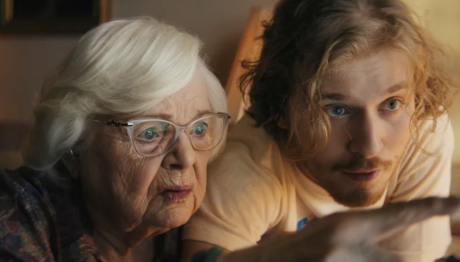
Should Ryan Murphy Adapt Grant-Scott Love Story?
Vanity Fair has published a longish article about the presumably romantic cohabitation between Cary Grant and Randolph Scott, which began in the early ’30s and ended sometime…I forget but somewhere around ’38 or ’39. Written by David Canfield, it’s titled “Cary Grant and Randolph Scott’s Hollywood Story: ‘Our Souls Did Touch’“.
The subhead reads, “Hedda Hopper once asked of Grant, ‘Whom does he think he’s fooling?’ The star’s bond with Scott has been the subject of nearly a century of speculation, but the truth about their impact on each other’s lives has been hiding in plain sight.”
It’s basically another speculation piece — nothing freshly authoritative or rock-solid — but Canfield is apparently persuaded that their sexual activity was fleeting or discreet or something in that realm (i.e., no pitching or catching, no Crisco), and that the emotionally anxious or unstable Grant was more head-over-heels about Scott, who came from a wealthy Virginia family, than Scott was about him.
In any event a friend has suggested that the Grant-Scott saga could be an intriguing Ryan Murphy miniseries of some kind. I’m not so sure. They lived together and then they didn’t because there was too much loose talk around town. Somehow they got away with pretending to be mere roommates for several years, but finally Grant was told by this or that studio head that enough was enough. That’s one version of the story, at least.
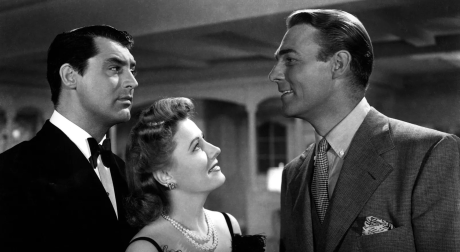
All Hail Tom White, Taciturn Hero of “Killers of the Flower Moon”
Roughly two months ago a very early draft of Eric Roth‘s screenplay for Killers of the Flower Moon (dated 2.20.17, or eight weeks before David Grann’s source book was published) turned up on a Reddit screenwriting forum.
Roth’s 153-page screenplay, which arrived in my inbox around 6 am this morning, was posted late last year by “Sheshat the Scribe.”
Anyway I finally read it this morning and holy moley…if Martin Scorcese had manned up and shot this version of the tale Killers would have been a much more engrossing kettle of fish.
No exaggeration — Roth’s early-bird script is approximately 17 or 18 times better than the film Marty finally made. Because Killers suddenly has a central character you can easily roll with (i.e., FBI guy Tom White, who Leonardo DiCaprio was originally intending to portray) as well as an actual point of view.
White isn’t just the resolute, soft-spoken, voice-of-the-prairie hero of the piece but a decent, honorable lawman with occasional moments of doubt and uncertainty, but finally a dude who stays the course, toughs it out and brings at least a semblance of partial justice to a sprawling and horrific murder saga.
In Marty’s film version White (played by Jesse Plemons) is reduced to a supporting character who appears at the two-hour mark.
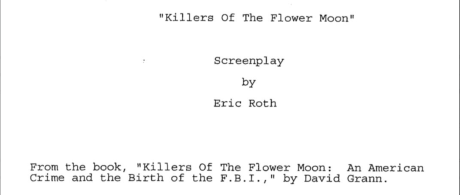
Here’s how I put it to a screenwriter pally a couple of hours ago: “My God, what a truly compelling and fascinating film Killers of thge Flower Moon could have been. Hats off to Roth for some wonderful writing, sublime tension, terrific structure. It really lives and breathes!
“And what a great, soft-spoken, drillbit character Tom White is! His laconic, man-of-the-prairie dialogue is so spare and true and eloquent.
“If only John Sturges had directed this screenplay in his prime! Or Oliver Stone in the ’80s or Michael Mann, Chris Nolan, Paul Thomas Anderson…Sam Peckinpah even.
“If only Marty and Leo hadn’t lost their nerve…if only they hadn’t been so scared of provoking the wokesters and suffering their ferocious wrath, i.e., “We’re done with white heroes! Only racists-at-heart would tell such a tale! And fuck David Grann!”
“My head was completely turned around by reading this, and Roth wasn’t even afraid of including racist cracker dialogue from time to time. (Brave.) And Mollie Burkhart actually conveys a certain gratitude (i.e., a slight smile) to White at the very end. I don’t know if Lily Gladstone even read this version of the script, but if so she almost certainly would’ve hated it.
“I wish I had read this six or seven years ago. It would have clarified a lot of things. Roth and Scorsese went with a woke version of Grann’s tale, of course, but in the early stages Roth truly did himself proud.”
If you weren’t much of a fan of Killers of the Flower Moon or even if you were, please read this early Roth draft — it’s a revelation.
Farting Sasquatch Orifice Leakage
“Jesse Eisenberg and Riley Keough star in Sasquatach Sunset, an absurdist comedy [that] follows a family of Yetis over the course of a year.
“With zero dialogue or narration but plenty of grunts, the film captures an immersive, ‘true’ depiction of the daily life of the Sasquatch. That apparently involves sex, masturbation, vomiting, flatulence and plenty of other gorey acts that aren’t fit to print.
“A smattering of audience members appeared to be too squeamish about these quotidian experiences, shielding their eyes during bloody moments and stomping for the exit at the Eccles Theater well before the credits began to roll.
“Others delighted in the gastrointestinally graphic sequences. One scene, involving liquids spouting out of every — and we mean every — orifice of the female Bigfoot, played to raucous applause in the room. Less than 15 minutes into the film, one moviegoer announced to nobody in particular, ‘This is the weirdest movie ever.’
“Sasquatch Sunset is the kind of movie you need to see to believe.”

Criminal Protagonists
A friend suggested a list of the Ten Best American Crime Flicks of the ‘70s.
By which he meant films that spend more time on criminals than people trying to catch them, or no time with the catchers at all.
No cop movies, he said, which eliminates Dirty Harry, The French Connection, The Seven-Ups, etc. Also no period caper or con movies (The Sting, The Great Train Robbery), no historical gangster flicks (The Godfather I and II). Strictly contemporary crime pictures in which the protagonists are engaged in criminal activity. Hence Friedkin’s Sorcerer (desperate struggle over rough terrain) and Don Siegel’s Escape From Alcatraz don’t qualify. And no Juggernaut because it’s told almost entirely (98%) from the point of view of the catchers.
Three of his picks I immediately scratched off — Richard Brooks‘ $ (aka Dollars), Michael Cimino‘s Thunderbolt and Lightfoot (fuck Cimino) and Walter Hill‘s The Driver (too loud, brutalist, mechanical). Which left seven.
I then added seven more for a total of 14 films, all released between 1.1.70 and 1.1.80.
Three of my top ten opened in ’77 and ’78, but the other seven were released between ’71 and ’73. In order of preference…
1. The Day of the Jackal (’73)
2. The Friends of Eddie Coyle (’73)
3. Get Carter (’71)
4. Badlands (’73)
5. The Outfit (’73)
6. The American Friend (’77)
7. Who’ll Stop the Rain? (’78)
8. Charley Varrick (’73)
9. The Hot Rock (’72)
10. Straight Time (’78)
Slightly second tier but at the same time smart and engaging:
11. The Taking of Pelham 123 (’74)
12. The Getaway (’72)
13. The Silent Partner (’78)
14. Going in Style (’79)
Proud Owner
I’m going to stick my neck out by saying I’m probably the only tristate area guy with a Red River belt buckle and a “Kennedy for President” sticker on my car’s rear bumper.

That’s All She Wrote for Sports Illustrated (August 1954 — January 2024)
Kaput. Over and done with. Staffers terminated.
I never bought a single S.I. issue or read a single article but it was a respected, top-rank publication from the early Eisenhower era all the way to the age of Joe Biden — nearly 70 years of publishing. All I did was glance at the swimsuit issues.
